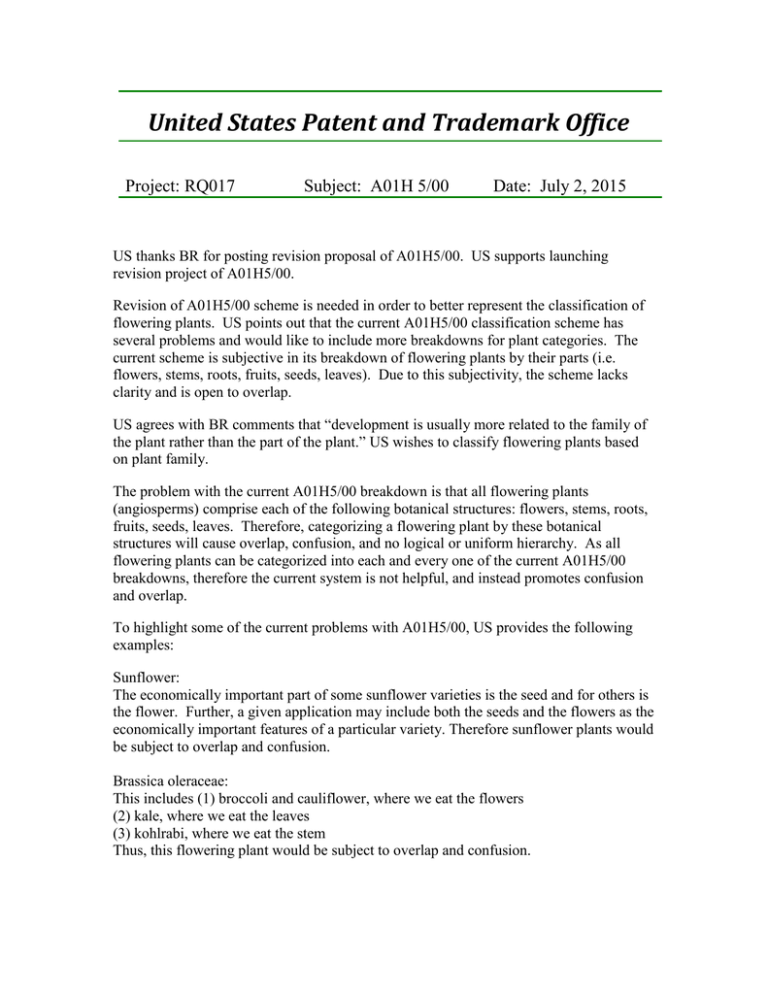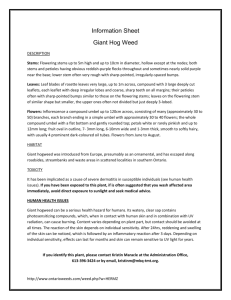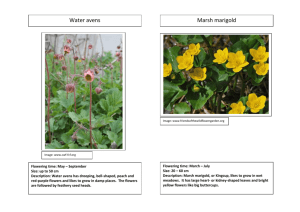2 - WIPO
advertisement

United States Patent and Trademark Office Project: RQ017 Subject: A01H 5/00 Date: July 2, 2015 US thanks BR for posting revision proposal of A01H5/00. US supports launching revision project of A01H5/00. Revision of A01H5/00 scheme is needed in order to better represent the classification of flowering plants. US points out that the current A01H5/00 classification scheme has several problems and would like to include more breakdowns for plant categories. The current scheme is subjective in its breakdown of flowering plants by their parts (i.e. flowers, stems, roots, fruits, seeds, leaves). Due to this subjectivity, the scheme lacks clarity and is open to overlap. US agrees with BR comments that “development is usually more related to the family of the plant rather than the part of the plant.” US wishes to classify flowering plants based on plant family. The problem with the current A01H5/00 breakdown is that all flowering plants (angiosperms) comprise each of the following botanical structures: flowers, stems, roots, fruits, seeds, leaves. Therefore, categorizing a flowering plant by these botanical structures will cause overlap, confusion, and no logical or uniform hierarchy. As all flowering plants can be categorized into each and every one of the current A01H5/00 breakdowns, therefore the current system is not helpful, and instead promotes confusion and overlap. To highlight some of the current problems with A01H5/00, US provides the following examples: Sunflower: The economically important part of some sunflower varieties is the seed and for others is the flower. Further, a given application may include both the seeds and the flowers as the economically important features of a particular variety. Therefore sunflower plants would be subject to overlap and confusion. Brassica oleraceae: This includes (1) broccoli and cauliflower, where we eat the flowers (2) kale, where we eat the leaves (3) kohlrabi, where we eat the stem Thus, this flowering plant would be subject to overlap and confusion. Potato: While most would think the economically important part is a root, botanically the potato portion it is actually a stem. If an application drawn to a new potato variety and a new method of making potato chips were examined in the food groups first, the patent issuing from this would be classified by the food examiners as a root. The food examiners are not botanists, and would not know the potatoes we eat are stems, not roots; thus, they would misclassify it in A01H5/06 Roots, instead of where it would belong, A01H 5/04 Stems. Hence, these multiple areas of overlap as described in the above examples above could potentially lead to confusion and misclassification in the current A01H scheme. U.S. believes that a scheme based on plant taxonomy alone will resolve these issues. Classification of plants according to a scheme based on taxonomy: family, genus, and species will be specific to the taxonomic family and selective for a specific plant rather than subjective. US has provided a scheme proposal in Annex 3 for consideration. This scheme uses plant taxonomy for classification of plants. L.K. Myers J.Kravets






